Join the VIP Teacher Club!
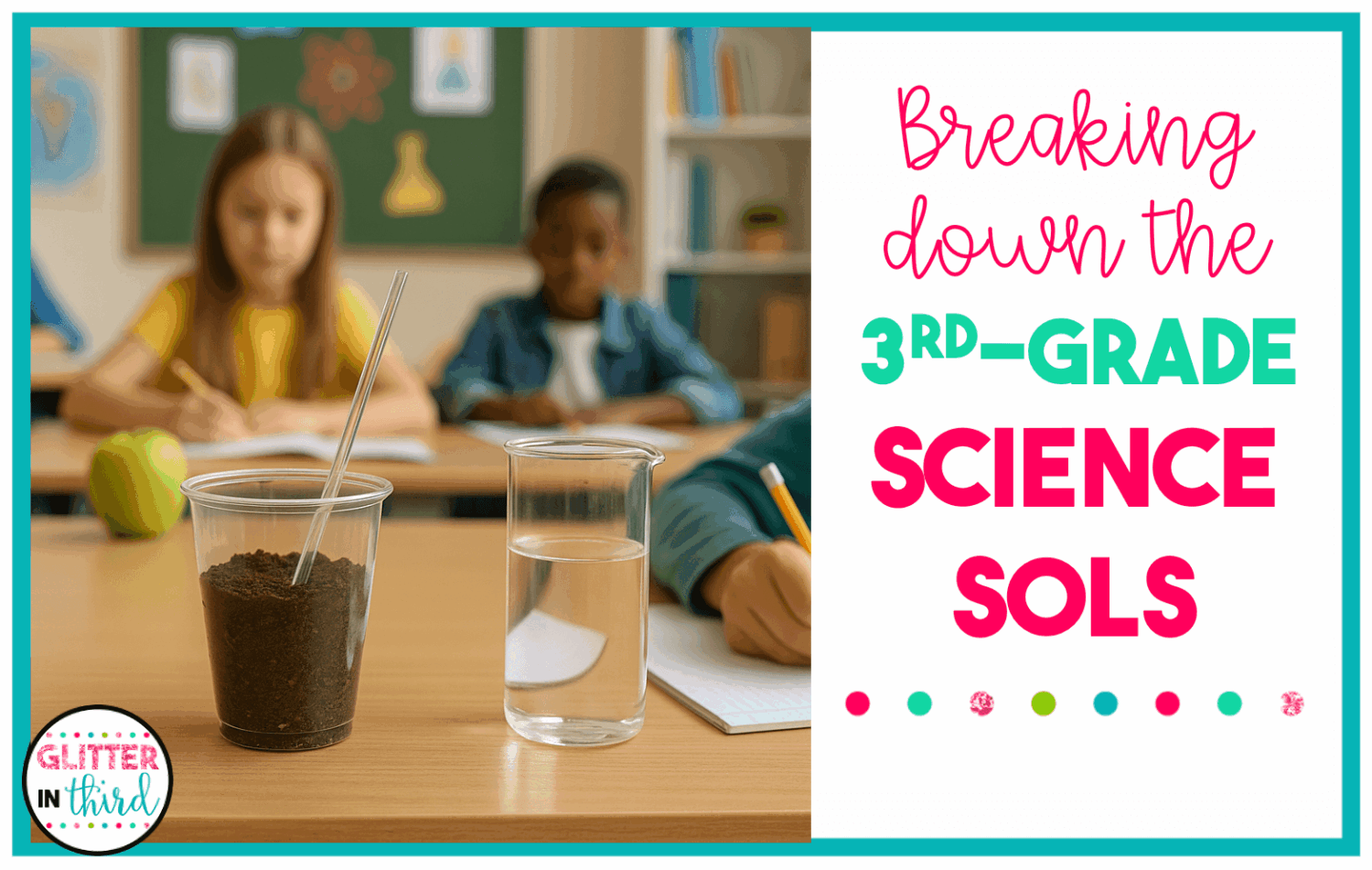
If you’ve ever looked at the 3rd grade Virginia science SOLs and thought, “Wait, they want me to teach all of this in one year?”—same.
Science in 3rd grade is exciting, messy, and a little bit overwhelming. These kids are curious and full of questions (so many questions), but between your pacing guide, test prep, and trying to remember where you put the magnifying glasses… it’s a lot.
Whether you’re new to 3rd grade science or just trying to make sense of the 2018 standards, this post breaks it down in a way that makes sense—with teacher-friendly explanations, kid-friendly language, and practical ways to actually teach it all without losing your mind.
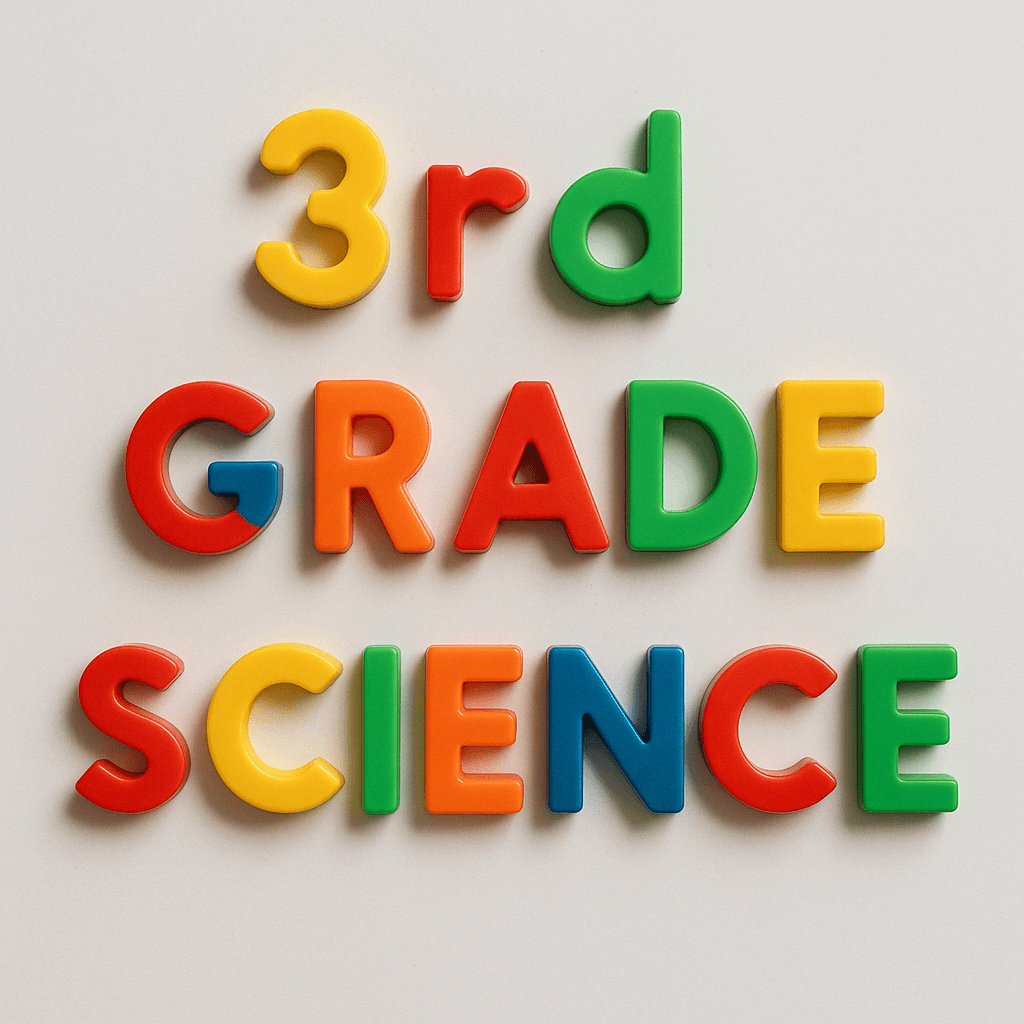
The 2018 Virginia Science Standards for 3rd grade include:
These standards cover a lot. Some of it’s exciting. Some of it feels like it was written by someone who hasn’t tried to teach 25 third graders the difference between evaporation and condensation while also dealing with a fire drill and indoor recess.
You want your students to understand science, not just memorize definitions—but actually getting there takes time, modeling, hands-on learning, and a whole lot of flexibility.
This post isn’t about making the standards sound magical. It’s about helping real teachers make sense of them, figure out what they’re actually asking, and find ways to teach them without reinventing the wheel.
Pushes and pulls, friction, net force, ramps, pulleys, and more.
How I explain it to kids:
Force means a push or a pull. When we use a ramp or pulley, it helps us move stuff without using as much muscle.
Helpful Classroom Idea:
Set up stations where students test toy cars or balls on different surfaces (tile, sandpaper, felt). Have them measure how far the object rolls and record the results. Then introduce a simple machine like a ramp or lever using classroom supplies. Ask: Which surface has the most friction? How does the ramp help?
Need SOL-aligned resources?
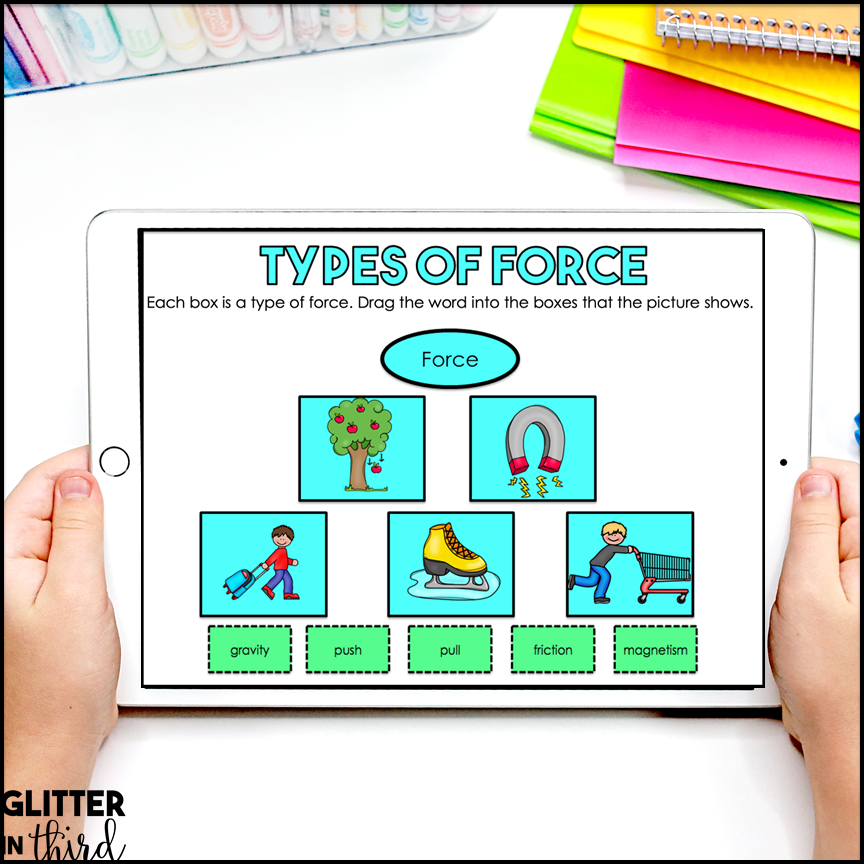
What it covers:
What dissolves in water and how temperature changes that.
How I explain it to kids:
You know how sugar disappears in tea? That’s dissolving. Cold tea? Not so much.
Helpful Classroom Idea:
Have students conduct a dissolving test with warm and cold water. Use sugar, salt, oil, and sand. Provide a table where they record what dissolves, what doesn’t, and how temperature makes a difference. This can lead into a discussion about mixtures and solutions.
Need SOL-aligned resources?
What it covers:
How animals survive and how fossils show what lived long ago.
How I explain it to kids:
Animals have cool traits that help them live in their homes. And fossils are nature’s way of leaving behind clues.
Helpful Classroom Idea:
Use pictures or short videos to introduce physical vs. behavioral adaptations (e.g., hibernation vs. sharp claws). Then, have students create an “adapted animal” for a specific environment (arctic, rainforest, desert) and explain their survival traits. For fossils, press small objects into clay and “excavate” each other’s fossils the next day.
Need SOL-aligned resources?
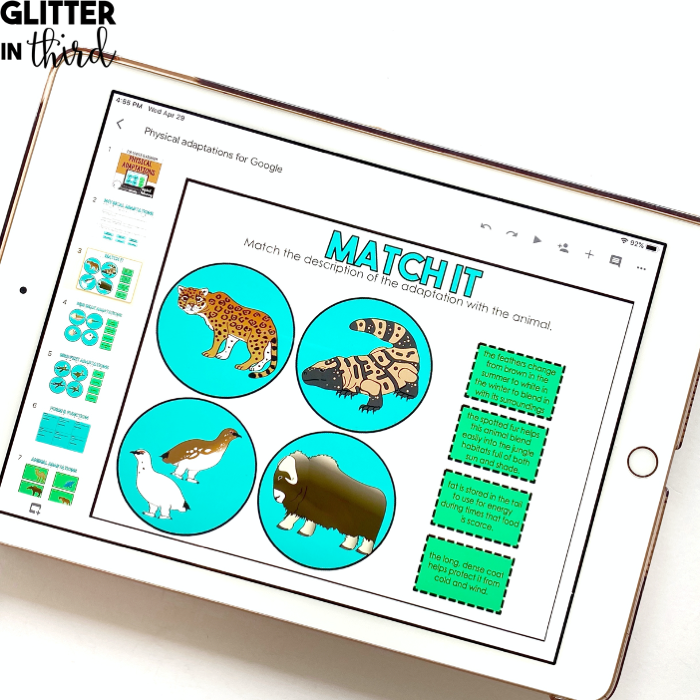
What it covers:
Living vs. nonliving things, food chains, energy, roles like producers and decomposers.
How I explain it to kids:
Everything works together like a team—plants, animals, the sun, the dirt, even the bugs.
Helpful Classroom Idea:
Create food chain cards and have students build their own food chains or webs using string or arrows to connect the parts. Add decomposers like fungi and worms to make it more realistic. Use examples from familiar environments like forests, ponds, or even a backyard.
Need SOL-aligned resources?
What it covers:
Types of soil and how they help plants.
How I explain it to kids:
Soil helps plants grow. Some soil holds water better, and some has more food in it.
Helpful Classroom Idea:
Let students test 3 types of soil (sand, clay, and potting soil) by planting bean seeds in each. Have them water the plants equally and observe which ones sprout first or grow taller. Tie in observations with soil composition and water retention.
Need SOL-aligned resources?
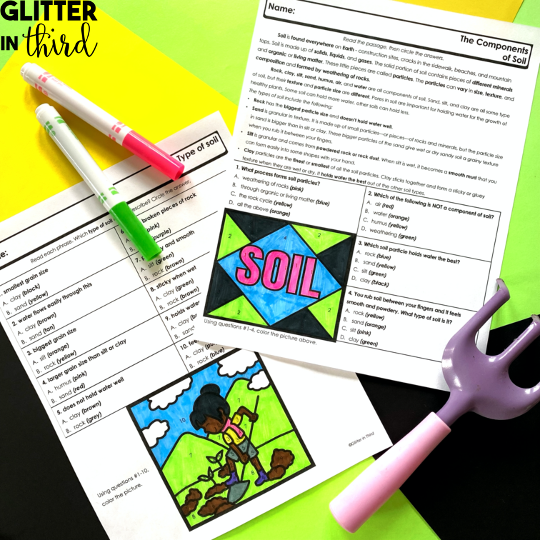
What it covers:
Evaporation, condensation, precipitation, and water sources on Earth.
How I explain it to kids:
Water is always moving. It goes up, makes clouds, and falls back down again.
Helpful Classroom Idea:
Use a clear plastic cup of warm water, cover it with plastic wrap, and place an ice cube on top. Watch condensation form under the plastic. Use this as a live model to introduce the cycle. Label a water cycle diagram together afterward.
Need SOL-aligned resources?
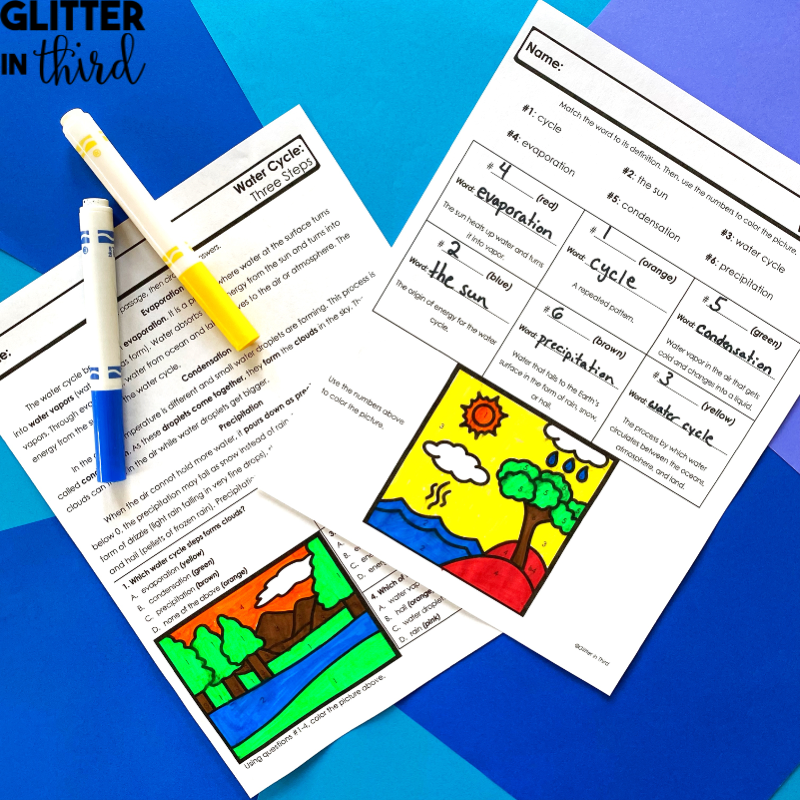
What it covers:
Pollution, natural disasters, and taking care of Earth.
How I explain it to kids:
We need to protect our Earth. That means recycling, saving water, and not tossing trash everywhere.
Helpful Classroom Idea:
Create a simple conservation checklist. Have students record ways they helped the Earth during the week (turning off lights, recycling, picking up trash). For natural events, show pictures of floods, fires, or storms and discuss how people prepare and respond.
Need SOL-aligned resources?
This one’s woven through the entire year. It’s not a separate unit—it’s how we do science all year long.
Students are expected to:
It’s about building science habits that go way beyond a test.
Helpful Classroom Idea:
Start a “Wonder Wall” where students can post science questions. Choose one each week to investigate as a class. Use magnifying glasses, rulers, or thermometers as often as possible so students get comfortable using real tools. Even simple activities—like measuring how fast ice melts in different spots around the room—can help build observation and inquiry skills. Keep it low-pressure. The goal is to help students see themselves as scientists, not just science learners.
Need SOL-aligned resources?
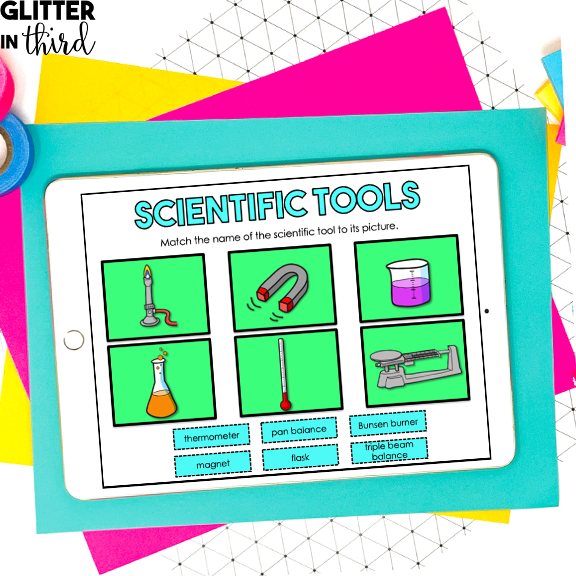
You meant to plan science over the summer… and then summer did what summer does. (Same here. I blinked and suddenly it was August and I was out of glue sticks and brain cells.)
If you’re looking for a done-for-you way to tackle the entire 3rd grade science year without piecing together random resources or reinventing the wheel, I’ve got three bundles that might just be your new best friends:
The 3rd Grade Science Interactive Notebook Bundle
Hands-on, engaging, and super kid-friendly. You’ll get flipbooks, vocabulary, diagrams, and meaningful activities for every standard. It’s everything you need to build interactive notebooks that actually work—no fancy supplies or Pinterest stress required.
The 3rd Grade Science Google Classroom Bundle
All the same standards—just digital. Ideal if you’re teaching in Google Classroom, need sub plans that won’t require paper, or just want to stop wrestling with the copy machine.
The 3rd Grade Science Jeopardy Games Bundle
Need a way to review that doesn’t feel like review? These games are the easiest way to sneak in engagement and check for understanding. Your students will beg to play—and you’ll quietly pat yourself on the back.
Grab one, or go all in and get all three. Either way, your future self will thank you. (Possibly with coffee.)
Everything’s aligned to the 2018 Virginia SOLs and designed to feel doable on a Wednesday afternoon with 25 kids and zero energy.
Because let’s be honest—you’ve got enough on your plate already.
You don’t need to be a science genius. You just need to be willing to try something hands-on, talk through the vocabulary, and give your students space to think like scientists.
It doesn’t have to be perfect. Your kids will remember the messy experiments, the dirt under their fingernails, and the moment their seed finally sprouted way more than they’ll remember a worksheet.
And if science feels like a lot right now, just wait until you peek at the new social studies SOLs. (Yep, they changed those.) I broke it all down right here so you can see what’s different and how to make it work in your classroom.
You’ve got this.

Hey there, I’m Kelly! I I love helping teachers save time with technology and resources so they have more hours in the day to spend with family and friends. Take a look around to find new ideas that you can implement in your classroom today!